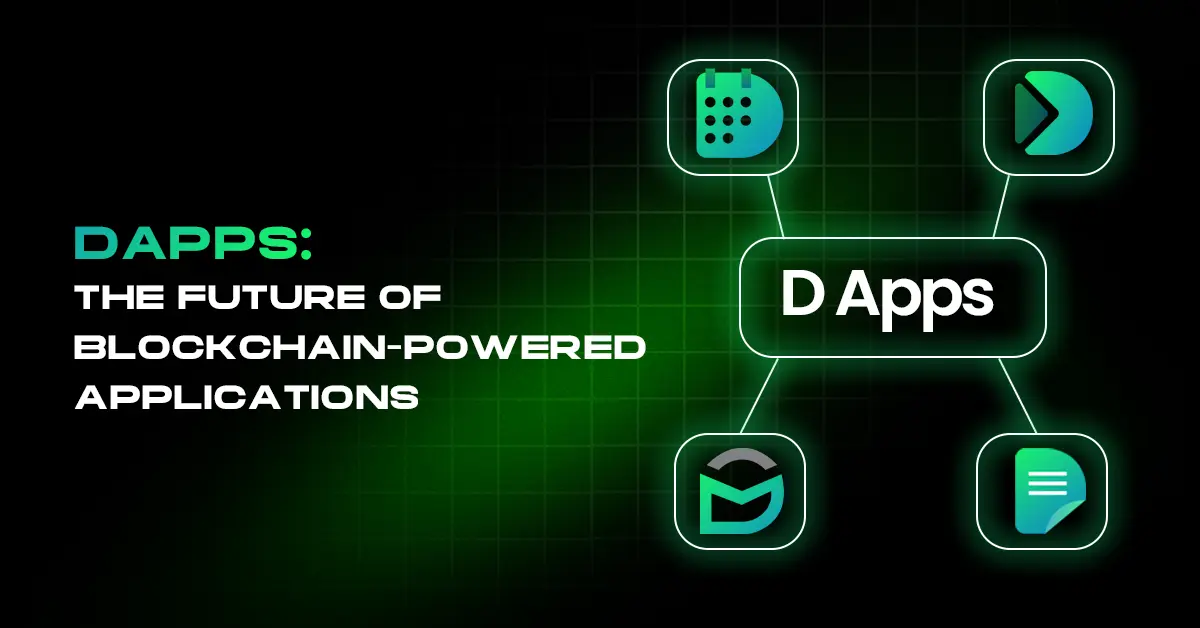What if the internet were to occur without the need for middlemen? That is where DApps enter. DApps are decentralized apps that operate in blockchain networks.
Unlike normal apps, DApps eliminate central control. They give users control of their actions and information. In this article, we look into their future. We discuss how DApps are transforming blockchain-powered applications.
Blockchain is revolutionizing how we interact with apps. DApps spearhead this revolution with safe, user-driven platforms. They operate without a central authority or data collection. This article describes how they map the future.
Understanding the Rise of Decentralized Apps
DApps are applications built on blockchain networks. They function with smart contracts to manage operations. They automate execution and rules.
That makes it open, secure, and tamper-evident. Users are engaging directly with protocols and not with corporations. That peer-to-peer structure maximizes control and privacy.
Every transaction written into the blockchain. That creates trust without middlemen. Ethereum created the first generation of DApps.
It demonstrated how decentralization could drive real applications. Developers began building finance, health, game, and media apps.
The movement grew fast. Users enrolled for security, freedom, and control. Legacy programs can crash or shut down.
Blockchain networks are immune to those crashes. They keep running even when parts go offline. That is why this model continues to grow.
NCOG constructs strong solutions with blockchain. It empowers people to take control, have privacy, and be resilient on a decentralized web.
Key Features Driving Decentralized Apps Adoption
There are some reasons behind the popularity of DApps. Transparency is one of them. Everything is in a public ledger. One can easily check them. It builds trust.
This also promotes accountability. Security is another advantage. It encrypts User data using blockchain encryption. There is no single point of failure.
This minimizes the scope of attacks. Decentralization powers the system. Dapps use Distributed networks, unlike conventional apps. Smart contracts take care of logic and functionality. This is more efficient and cost-effective.
The users control their resources and identity. It does not share Information. In today’s environment, where hacks commonly occur, Decentralized Apps are outstanding.
These features are attractive to individuals who desire security and control. They usher in a new era in software.
Popular Use Cases of Decentralized Apps in Today’s World
Decentralized Applications are bringing world-like solutions. Finance is at the forefront. DeFi applications such as Aave and Uniswap enable the user to lend or exchange without banks. Gaming witnesses the play-to-earn model transform rewards for gamers.
The game rewards real-world value to the gamers. Healthcare brings secure record-keeping through DApps.
They safeguard patient information. In online communities, they own their content and revenues. No central authority governs them.
These sectors illustrate DApps. They reduce intermediaries. They introduce transparency and trust.
They provide true ownership. From cash to media, Decentralized Apps are revolutionizing how we deal with digital services. As their applications grow, increasingly more sectors embrace them in order to achieve efficiency and security.
Challenges in Scaling Decentralized Apps Globally
It is hard to scale DApps. Blockchain networks are slow. They process fewer per second than old-school systems. That takes longer. That also increases gas prices. These prices discourage normal users. Bad user experience is another issue.
Most DApps demand wallet and private key details. Interfaces are intricate. This annoys new customers. Regulation is unclear as well.
Governments continue to argue about the regulation of DApps. There is a legal doubt for developers.
Mass adoption relies on resolving these issues. Decentralized Apps need to scale better. It needs to reduce Fees. User experience needs to get better.
Legal certainty needs to exist. If it does not remove these barriers, DApps…

Comments
Post a Comment